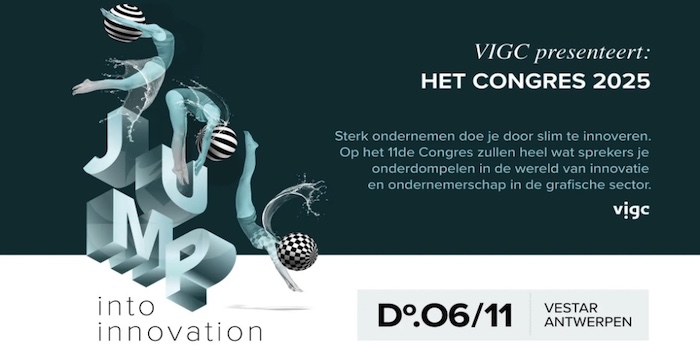Wild Format #2.4: Why ink matters for Wide Format Digital Printing
Choosing the ink and pigments to use in printing has always been a crucial decision, one that is very much related first of all to the selected printing method and secondly to the preferred substrate. What the print will be used for also enters into the calculation. Wild format projects displayed on the sides of buildings have very different demands, compared to the needs of interior designs.
Much knowledge and experience about wide format printing has been gathered not least by screen printers over many years. But when moving into digital production, parameters have changed so much that it’s almost like starting anew from a blank slate. Can this or that digital printing device use an ink that you’re familiar with from analogue screen printing? Probably not. So what types of inks are common in inkjet digital printing, and what printing technologies should you consider?
Inky fingers
There are four main categories of digital printing inks: water based inks, solvent based inks, dye sublimation inks and UV curable inks. One can argue that there is a fifth common type of ink, latex inks such as those HP has developed, but these are a special type of water based inks, so should really fall under the first category. All inks have two things in common: the two main components are a colourant, either dye or pigment based and all use a carrier for the colourant, generally a liquid.
Heads-up
When it comes to printheads two technologies dominate: thermal inkjet heads and piezoelectric inkjet heads. In reality the press manufacturer will have chosen the inkjet printhead best suited to their preferred type of ink, so when choosing a suitable digital printer, the main concern for the buyer is to identify the types of substrates most likely to be printed. From that perspective it is easier to decide which type of ink will be most suitable for the job. Except, as with all machines, you need to take into account the expected operational life span of the printheads, the cost of maintenance, and/or the cost of replacement heads. And of course the actual cost of the ink, which you can generally base on the amount used per square metre for a specified density.
So many inks to choose amongst
There are two main carriers for the colourants: water and solvent based solutions. Water is generally seen as harmless and sustainable, while solvents are more problematic. They contain Volatile Organic Compounds (VOCs) and come in many different flavours. VOCs are compounds that evaporate at low boiling points, so they evaporate quickly at room temperature. These vapours are mostly not healthy to inhale, which is why a printing press using solvents based ink must have some sort of industrial air extraction mounted at or inside the press. The attraction of using solvent based ink is that the ink dries very quickly and creates a durable print, especially on vinyl, and has a relatively large colour gamut. These inks can be printed onto quite a wide array of substrates.
The ink in digital wide format printers needs to be viscous enough to pass through the tiny nozzles in the printhead, and also keep their shape when jetted to the substrate. Image courtesy of S Hoath
Water, water everywhere
Water based inks come in two flavours: dye based ink and pigment based ink. Dye based inks generally offer a larger colour gamut than that of pigment based inks, and are less prone to metamerism where the hue or colour changes when the print is viewed under different types of light. On the other hand pigment based inks are considered more durable, with better light fastness than dye based inks. Water based inks typically print best on paper. But the paper needs to have special surface treatment so that the ink doesn’t spread uncontrollably on the surface, messing up the print’s appearance. This is especially important for paper types which appear to be uncoated. It’s usually not possible to print with dye based inkjet ink on conventional litho offset papers either, at least not with an acceptable result.
When using dye based ink the droplets can be very small, so this type of ink is particularly suitable for very high resolution output. These inks normally have no odour, but as with all chemicals the user should avoid skin contact. With some inks in their liquid state there can be some risk of an allergic reaction with repeated contact directly onto the skin.
As mentioned, latex inks fall under the general category of water based inks, but are often referred to as a special type of ink. While water- and pigment based, the key component is the polymer dispersed in the water. The water is dried out of the print instantly through fans and heaters, so prints exit the printer completely dry. They can be laminated straightaway without the need of degassing. Latex inks stretch well, so they are popular for vehicle graphics.
Not to be sniffed at
Solvent based inks are still favoured particularly when printing on vinyl and when long durability and light fastness is required. They are also popular when printing on stretchable substrates. With good ventilation the problems with VOCs can be minimised, but although the ink dries more or less instantly, the printed vinyl still needs to be degassed (or outgassed) before post treatments such as lamination. Depending on the substrate and ink used, this takes anything from an hour to up to 36 hours. Water based inks can also need some degassing before being laminated, but this is perhaps less well known in the industry.
Dye another day
Dye sublimation inks are especially popular when printing on textiles and come in two flavours, suitable for different inkjet heads. The most common dye sublimation ink is waterbased, but there are also solvent based ones. There are several different dyes mixed to match the type of fabric you want to print on, like for example acid dyes for silk, nylon and wool. Then there are reactive dyes for cotton, rayon, linen and silk. And then there are disperse dyes for polyester. There are also a range of pigment based inks, which normally need to be fixed through heat or UV.
Dye based ink enables very small ink droplets, allowing very high resolution output. Here a print sample from an Epson SC-P20000, with droplets down to 3.5 pl.
Tending eco
UV curable inks are probably the ones with the fastest uptake at the moment, in part because of their perceived reduced environmental impact. They are also suitable for printing on more or less any type of substrate. They cure instantly, have no odour when dry or cured, and they offer a reasonably large colour gamut and resolution.
There is a move towards what is sometimes called Eco Solvents, or Bio Solvents, but it’s not entirely clear what is meant by these terms as there is no consensus on their definition. The amount of VOCs in the ink is perhaps what matters most, so make sure you get full and complete information on this matter before you go with an Eco Solvent option on the basis of its environmental credentials.
Balancing acts
Cost relative to performance should be central to your decision for wild format project production. If you are choosing to buy your own printer, the main concern is of course that it can be used print on the type of substrate that will be the most common for your use case. But the cost of the ink, the performance in terms of drying times, possibly the need for special industrial ventilation, the cost of the electricity to drive not only the printer but also the heaters and fans, add to the total cost of ownership. Expected levels of maintenance as well as the cost of replacing the inkjet heads at the end of their operational life span, should also be included in the investment calculation. When you consider which print service provider to work with, all of these considerations will be part of their cost structures so it is important that you understand them.
Environmental concerns
More and more customers are working with printers who can demonstrate a responsible and sustainable printing process. You can request information about how a particular printer and ink combination impacts the environment. Choose options with good ecological credentials that also offer deliver the results you want at a reasonable price. A digital printer that has low power consumption is cheaper to run, will produce less unnecessary heat, so you don’t necessarily need to pay a premium for environmentally friendly print.
Paul Lindström
The Wild Format guides are intended to expand awareness and understanding of the craziness that can be created on wide format digital printing devices, from floors to lampshades and everything in between.
These guides are made possible by a group of manufacturers working together with Digital Dots. Together we hope you enjoy the articles and that you put into practise what you learn. If you want to talk about it, go to our LinkedIn group via this link.
Enjoy and Go Wild!
Sponsors of this articlel: Agfa – Digital Dots

De trainingen voor 2022 staan gereed. Kijk voor het volledige online aanbod van bestaande- en nieuwe trainingen op de website.
BLOKBOEK.COM EN PRINTMEDIANIEUWS: HET OPTIMALE DOELGROEP BEREIK




















